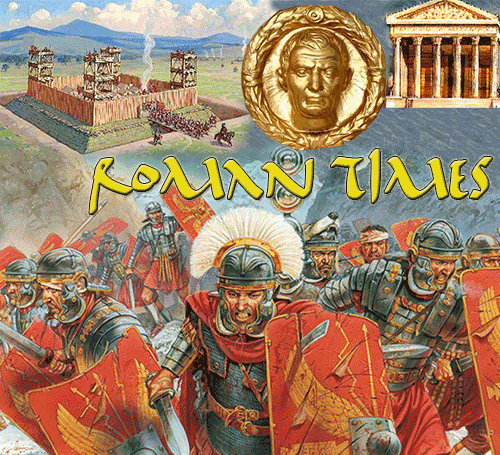Frequently Asked Questions
Why do you do this?
A: Because this hobby allows us to better understand what we think is a really interesting period in time. Reenacting is not a recent innovation.
It's ironic that the ancient Romans recreated epic battles in the Coliseum, both land and sea battles, for spectacle and entertainment of its citizens. These staged events were to show the power and might of Rome. However, not to be outdone, they included actual one-on-one combat with real weapons and real consequences. It is very interesting how the better combatants were always chosen to portray the victorious Romans and lesser equiped and trained combatants represented the vanquished. The emphasis was, of course, on spectacle and Roman supremacy.
Reenacting, as it is known today, in this country, began with Revolutionary War reenactments that were staged in commemoration of the U.S. Centennial in 1876 and numerous Civil War reenactments were staged for (and in some cases, by...) veterans around the turn of the century.
The only major change in the philosophy of reenacting over this course of time has been the shift in emphasis away from spectacle and towards historical accuracy. This new emphasis was also the catalyst for the development of “Living History.”Unlike reenactments, living history programs are not centered around mock combat; the main purpose of living history is education.
Historical accuracy and safety are indeed the most important aspects of modern reenacting. The majority of today's participants have a devout interest in the historical periods which they portray, and they work hard to recreate soldiers of yesterday as realistically as possible. To re-create these soldiers correctly, requires diligence and research. Safety is especially vital since various items are used to simulate the weapons of an actual battle.
So, if you've ever wondered about the life of of a soldier in the Roman Legions, come out with us and see a reenactment or living history event for yourself.
Q: Do you get paid for this?
A: No, in fact, we have to pay for our kit ourselves and often make much of our own gear.
Q: Do you have a script? How do you know what to do?
A: No, we just interact and try to live life as they did then. Of course, at a public event this is not possible, but at our immersions, yes, we do that. Anyway, think of it like this: We try to "Step back into the time period and just live life." Not always perfect, but it does often work.
Q: Is it expensive?
A: That depends on what you define expensive as. No, it's not free, but if you do much of the work, it can be reasonable. If you just put your kit on a credit card, well, it can be quite a bit more. It's best to do some of both and really, unless you go to high-end vendors/artists, your kit won't be right unless you do some work on it. If you do much of the work and attend unit fabricas (gear making parties leavened with food and talk and and good discussion), it can under $1000. Certainly not that much to start though. All you need to start is a tunica ($25. worth of cloth), a woven or rope belt and a pair of shoes (under $100). It's all what you put into it and make it. What does it cost to have a motorcycle? A boat? To go skiing? To own and ride an ATV? It's all relative.
Q: Why the emphasis on immersion/private events? Shouldn't it all be for the public and to teach?
A: No. Some of what we do IS for the public. For example, many of us attend the Virginia Scottish Games usually held Labor Day weekend in The Plains Virginia. The VSG is a good event, but we also attend the Timeline Event held at Fort Loudon, Pa at the end of May. Fort Loudon's event is a historical timeline event. It's great and the public there is very engaged. It's a good thing! However, for many of us, we also learn by doing and these private events let us slip into a more "first-person" role where we can learn how things were done, the best way to do things and in general, "feel" the period we portray. It's a lot different to stand around in armor and in sandals talking to people, than it is to have to march any distance or do work. You learn things from this experience. It also gives you a real appreciation for our ancient forebears and what they had to deal with.
Q: Do you allow women and children?
A: Yes, but in historically accurate roles. No women portraying men (nor men portraying women). Children are welcome as long as they are under parental control—not running around wild, in period dress and no modern toys, etc. "Wow, that sounds strict" some might say, but no, in reality, it heightens authenticity. Children DID exist (and not die of boredom) before the advent of electronics and plastic toys.
Q: How do you have combat?
A: We use a system called "needlefelt" (NFS) that allows full-force blows without injury. Unlike using rattan like the SCA or even live steel methods that some groups do, NFS is not going to injure anyone, which is kind of important, as we all have to go back to work on Monday. Anyway, it works good and the places that use this system enjoy a more realistic event.
Q: What do you do for food?
A: We usually try to make period dishes. Yes, recipes have come down through the ages. Not only are there books, but there are websites with some recipes like here. Obviously we don't make fancy gourmet meals, but actual recipes for what Roman soldiers actually ate, have come down through history. Sometimes it's different than what we eat now, but it's not bad. Posca on a hot day is very refreshing! Again, we gain an appreciation and understanding for our ancestors by doing this.












